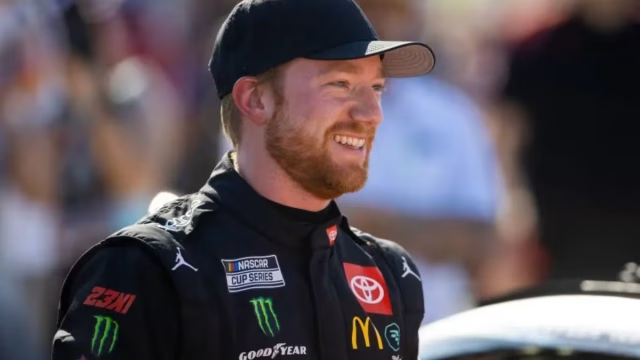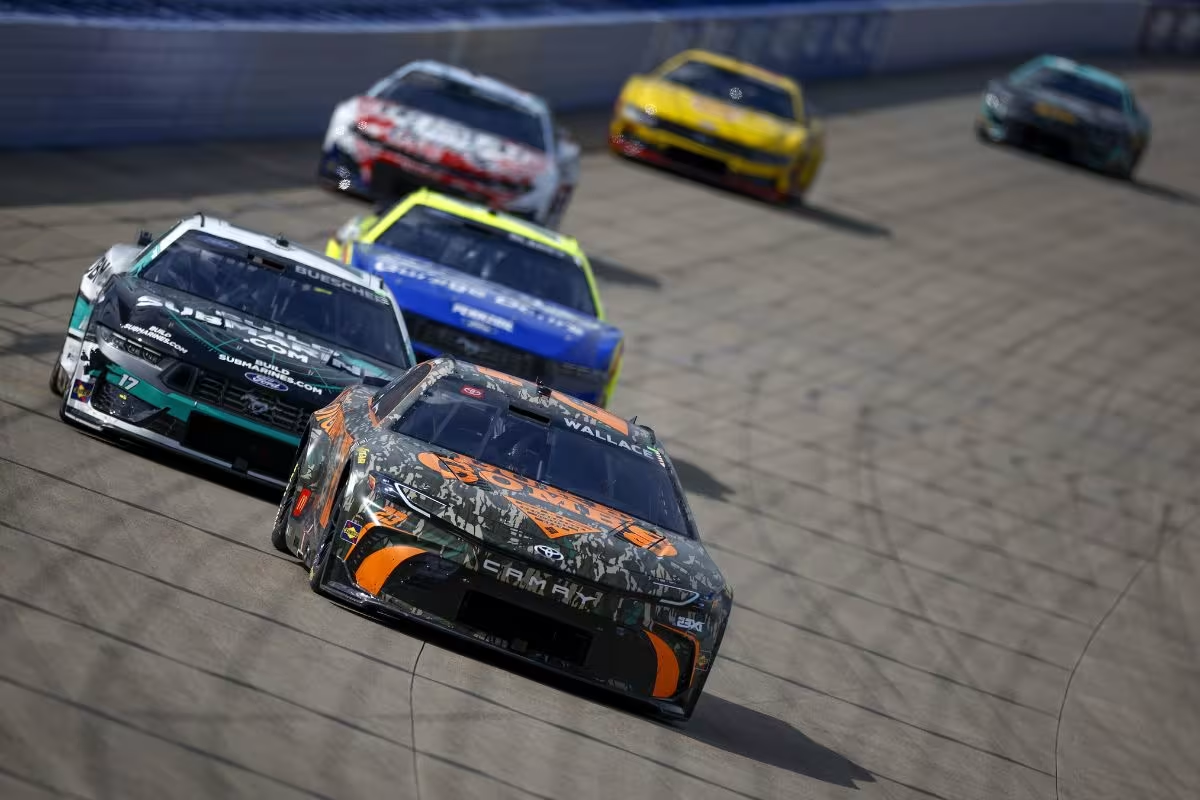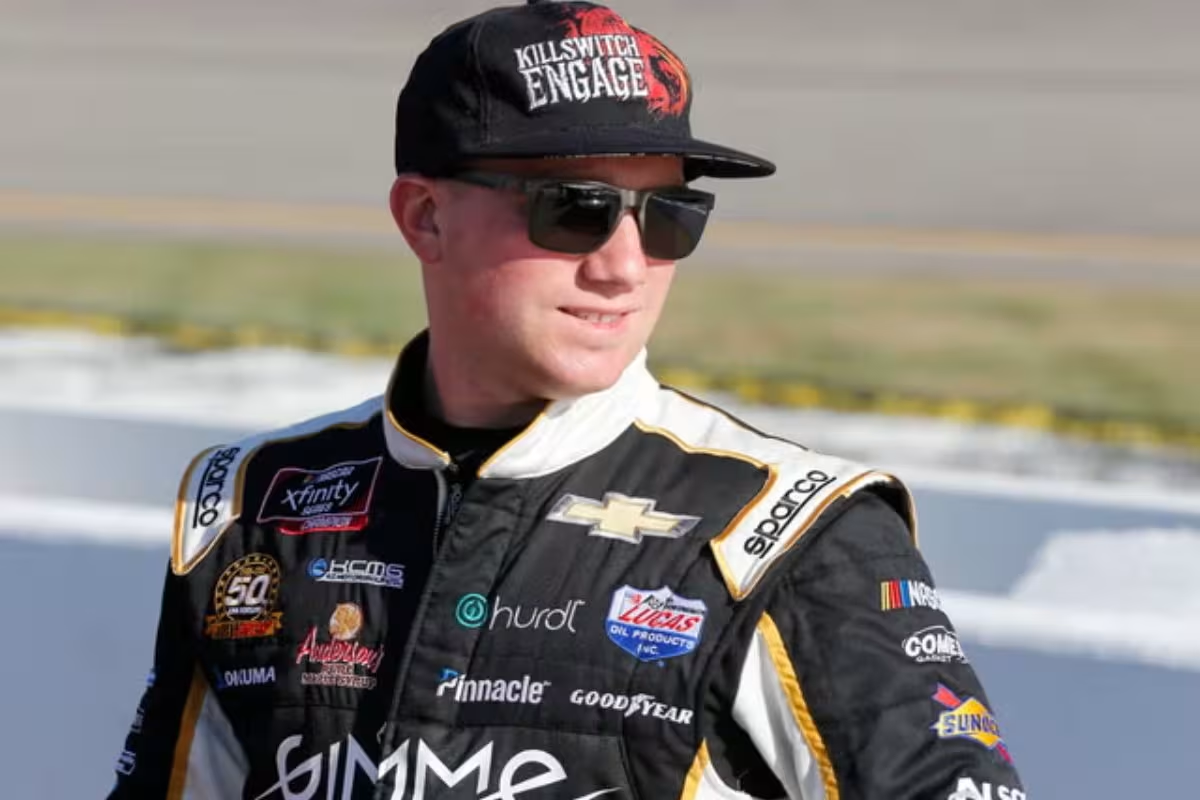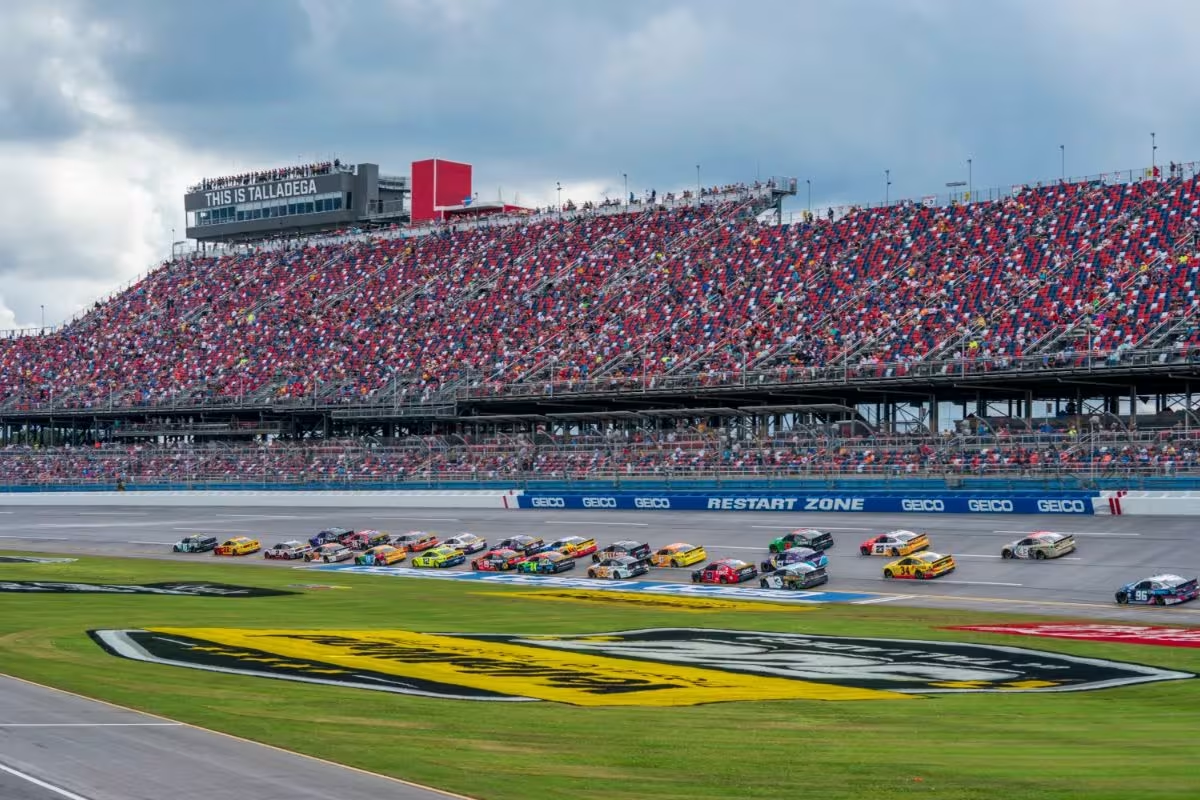Tyler Reddick’s Surprising Confession: Tyler Reddick‘s recent frank admission following his struggles at Kansas reveals a complex interplay between driver psychology and vehicle dynamics. By stating, “It’s easier to drive,” he emphasizes a resilience that reflects his adaptability and highlights the inherent challenges posed by the Next Gen car’s handling issues. This unexpected perspective invites a deeper examination of how psychological factors influence performance in racing environments. As Reddick prepares for the upcoming race at Talladega Superspeedway, one must wonder how these insights will shape his approach and potential outcomes.
Key Highlights
- Tyler Reddick expressed relief about driving conditions, stating it feels “easier” under certain circumstances despite recent performance struggles.
- He highlighted the need for improvement with the Next Gen car, indicating an understanding of the car’s handling issues.
- Reddick’s comments reflect an adaptive mindset, focusing on vehicle stability and control during high-speed racing.
- He emphasized the importance of thorough preparation and strategy adjustments to enhance performance in upcoming races.
- Reddick’s positive outlook aims to boost confidence and resilience for future races, despite the challenges faced at Kansas.
Handling Issues in the First Round
Handling issues can be likened to a persistent shadow that follows a driver throughout a race, and for Tyler Reddick, this metaphor became all too real during the initial round of the NASCAR Cup Series playoffs. Despite having dominated the regular season and securing the trophy just weeks prior, Reddick encountered unexpected challenges on the track that weakened his performance.
At venues where handling had previously been a non-issue, Reddick found himself grappling with a car that lacked the expected stability and responsiveness. These unforeseen mechanical dilemmas crystallized the reality that even the most promising seasons can be blemished by mechanical shortcomings.
As Reddick navigated the Round of 16, it became painfully clear that the handling issues he faced would not be easily rectified. The implications were considerable; not only did these challenges impact Reddick’s driving confidence, but they also added a layer of complexity to the team’s strategy.
The relationship between driver and machine is paramount in NASCAR, and when that synergy falters, the results can be disastrous. Reddick’s acknowledgment of these handling issues highlights the unpredictable nature of racing and emphasizes the importance of adaptability and resilience.
Struggles in the Hollywood Casino 400
Tyler Reddick’s quest for redemption in the Hollywood Casino 400 quickly turned into a battle against the very challenges that had plagued him in the initial round of the playoffs. As the defending race winner, expectations were high, yet Reddick found himself entangled in a series of setbacks that hampered his performance on the track.
Despite the promise and potential of NASCAR’s Next Gen car, Reddick struggled to harness its capabilities effectively. While he acknowledged the ingenuity behind the vehicle’s design, the benefits he anticipated did not materialize during the race. This disconnect between expectation and reality was evident as Reddick faced difficulties in handling the car, which ultimately led to a disappointing finish.
The track at Kansas proved unforgiving, compounding Reddick’s challenges and leaving him grappling with a sense of frustration. As he attempted to navigate the complexities of the race, it became clear that the car’s performance was not aligning with his driving style, creating an added layer of complexity to his efforts.
The Hollywood Casino 400 served as a reminder of the unpredictability of racing, where even seasoned drivers can find themselves at a disadvantage. For Reddick, this race was not just a physical contest on the asphalt, but a mental challenge, as he wrestled with the realities of competition and the intricate dynamics of the Next Gen car.
Tyler Reddick Struggles with Next Gen
Wheeling woes have become a prominent theme in Tyler Reddick‘s recent racing experiences, as he openly addressed the challenges posed by the Next Gen car during a post-race interview. The car, which has faced its fair share of controversy since its debut in 2022, has significantly been critiqued for its low horsepower and issues related to overtaking. Reddick’s straightforward remarks highlighting the difficulties drivers face in driving these new dynamics.
In a string of races that included a chaotic 6th-place finish at Atlanta, followed by disappointing results of 27th at Watkins Glen and 20th at Bristol, Reddick has struggled to find the competitive edge necessary for playoff success. His performance culminated in a lackluster 25th finish in Kansas, a glaring reminder of the challenges that have plagued his season.
With an average finish of 12.267, it is evident that luck has not favored the talented driver, despite his reliance on bonus points to progress to the Round of 12. As he continues to seek a top-five finish, understanding and overcoming these wheeling problems will be essential for Reddick’s future success in the playoffs.
Reddick on NASCAR’s Shark Fin Installation
Amid the ongoing discussions regarding the Next Gen car, Reddick offered a revitalizing perspective on NASCAR’s recent installation of the extra shark fin, which was introduced following Corey LaJoie’s spin at Michigan. This modification, aimed at enhancing vehicle stability, has garnered mixed reactions within the racing community.
However, Reddick’s insights stand out, reflecting a detailed understanding of the car’s performance dynamics. Reddick noted that the inclusion of the shark fin seems to mitigate rapid spins, allowing cars to handle more predictably during high-speed movements. He remarked, “I think…the car doesn’t spin as quick. So when a car yawns, you can just slide up a whole lot more than it used to. It might be that the car is a lot easier to drive than it was.”
This observation suggests that the new design could foster a driving experience that emphasizes control and precision, particularly in challenging racing conditions. Moreover, Reddick expressed a sense of ease in traversing the track, stating, “It’s a lot easier to lap after lap, slide off the corner.”
This comfort level highlights a notable shift in racing strategy, as drivers can now focus on maintaining speed rather than grappling with unexpected loss of control. Reddick’s positive appraisal contrasts sharply with the criticism voiced by his team owner, Denny Hamlin, highlighting the varied perspectives within the sport.
“Because you can slide up more, I think drivers and teams are trying to move their balance around. But we didn’t see teams waiting for it in the long run. I was one of them. But it definitely made the car harder to drive.”
“A lot of the times when you get in this car, you get loose and you almost have to back off completely…Because it becomes so easy to spin the car out or wreck because of it. And it just slows down a lot.” – Reddick
At least at Kansas for Tyler Reddick, the second shark fin on the right side installed after the Lajoie roll at Michigan, stabilized the Gen7, made it easier to slide the car and made them easier to drive. pic.twitter.com/JzzHGQijgs
— Matt Weaver (@MattWeaverRA) October 1, 2024
Looking Ahead to Talladega Superspeedway
As the NASCAR playoffs intensify, the focus shifts to the looming challenge of Talladega Superspeedway, a track notorious for its high-speed drama and unpredictable outcomes. Tyler Reddick, currently facing a four-point deficit after Kansas, approaches this event with both optimism and caution. Having previously clinched victory at Talladega, Reddick understands that the 2.66-mile layout can test even the most skilled drivers, often leading to dramatic incidents that can change the course of a race in an instant.
Reddick’s strategy is clear: adaptability is key. As he stated, “You have to be ready to adjust up or adjust down,” reflecting the necessity of real-time decision-making in such a dynamic racing environment. The interplay between fuel management and race strategy will be critical as he navigates the pack.
“I don’t think we approach it differently. You still need to do what is best for your team whether that’s as yourself or working with the other Toyotas…I have confidence when we go to the speedways, certainly, of what we need to do to put ourselves in a position to win. But every race plays out just so unique…We just have to be adaptable when we go too speedway races like that. You have to be ready to adjust up or adjust down. It just depends on how much fuel saving takes place in the stages of the race.” – Reddick
With all hands on deck at 23XI Racing, Reddick is poised to utilize his previous experience and insights to navigate the treacherous terrain of Talladega. Fans keenly anticipate whether he can convert preparation into performance.
News in Brief: Tyler Reddick’s Surprising Confession
Tyler Reddick’s frank acknowledgment of the challenges faced during the Hollywood Casino 400 highlights a broader narrative of resilience within the NASCAR community. His assertion that “it’s easier to drive” despite handling issues reveals an adaptive mindset crucial for maneuvering the complexities of the Next Gen car. As Reddick prepares for upcoming races, including the Talladega Superspeedway, this psychological strength may serve as a significant advantage, fostering both personal growth and competitive performance.
ALSO READ: Tyler Reddick’s Title Hopes in Jeopardy: Is He No Longer a Title Contender?



